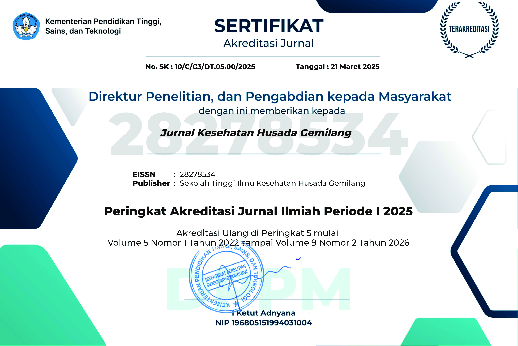FAKTOR-FAKTOR YANG MEMPENGARUHI RENDAHNYA PEMILIHAN ALAT KONTRASEPSI MKJP PADA PUS DI PUSKESMAS TEMBILAHAN HULU
DOI:
https://doi.org/10.61129/jkhg.v1i1.12Kata Kunci:
long-term contraceptive methods, couples of reproductive ageAbstrak
The coverage of MKJP preferences in Indonesia from 2009 to 2014 ranged from 12.60% to 25.37%. The percentage of new MKJP participants in 2014 is implant 10.65%, 7.15% IUD and MOW or MOP 1.71% (Ministry of Health RI, 2015). Based on data from Community Health Center of Tembilahan Hulu in 2016, the number of couples of reproductive agewere 7147 people, the number of active KB (birth control) participant were 5,469 people (76.5%) and those who did not use the contraception were 1,678 people (23.5%). There were 24 people (0.4%) of all active KB participants – who became MKJP participants. The aims of this study is to determine the factors that affect the low selection of MKJP contraceptives on EFA. The type of the research is an analytical survey with cross sectional design with a total sample of 71 respondents. The data gained through the questionnaire are analyzed by using chi square. The variables related to MKJP selection by EFA are age (sig = 0.001), education (sig = 0.015), and knowledge (sig = 0.001), while the parity variable has no significant relationship with p value 0.127. The younger the age, the lower education and the less knowledge of the respondents, the lower in the selection of MKJP method. It is recommended – for EFA who have more than 2 children – to use MKJP method because it is very effective for those who have medical contraindicates and non-medical.
Unduhan
Unduhan
Diterbitkan
Cara Mengutip
Terbitan
Bagian
Lisensi
Hak Cipta (c) 2018 Mia Rita Sari

Artikel ini berlisensiCreative Commons Attribution-ShareAlike 4.0 International License.










